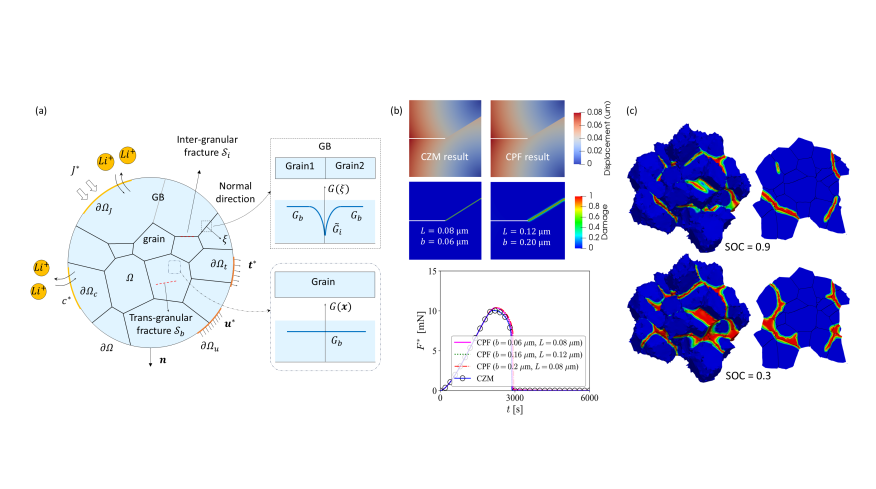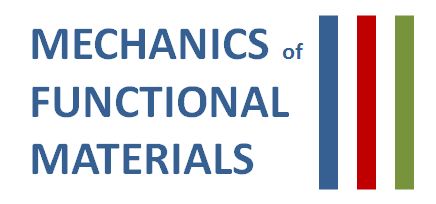A length-scale insensitive cohesive phase-field interface model: Application to concurrent bulk and interface fracture simulation in Lithium-ion battery materials
New Publication in “Journal of the Mechanics and Physics of Solids”
2025/01/01

Authors: Wan-Xin Chen, Xiang-Long Peng, Jian-Ying Wu, Orkun Furat, Volker Schmidt, Bai-Xiang Xu
A new cohesive phase-field (CPF) interface fracture model is proposed in this paper. It employs an exponential function for the interpolation of fracture energy between the bulk phase and the interface, and its effective interface fracture energy is solved based on the Euler-Lagrange equation of the phase-field theory and the consistency to the cohesive zone model (CZM) in the sharp interface concept. Comparison to other interface models in the literature clearly shows that the above energy consistency is essential to ensure the insensitivity of the results to the length-scale parameters for regularization of the crack surface and of the interface. The proposed interface model can be conveniently implemented via the relaxation solution of an Allen-Cahn equation, which offers high flexibility in handling structures of complicated interface topology. The proposed CPF interface model is employed further to derive a thermodynamically consistent chemo-mechanical model relevant to Lithium-ion battery materials. Finite-element simulations confirm the model's ability to recapture the competition between bulk and interface fractures, while also demonstrate its merits of length-scale insensitivity and consistency with CZM results. The model is eventually applied in polycrystalline electrode particles, which are reconstructed from images with segmented interfaces, confirming the expected computational advantages and the length-scale insensitivity in multi-physical context.
Link to Article
Journal of the Mechanics and Physics of Solids, Volume 196, March 2025



